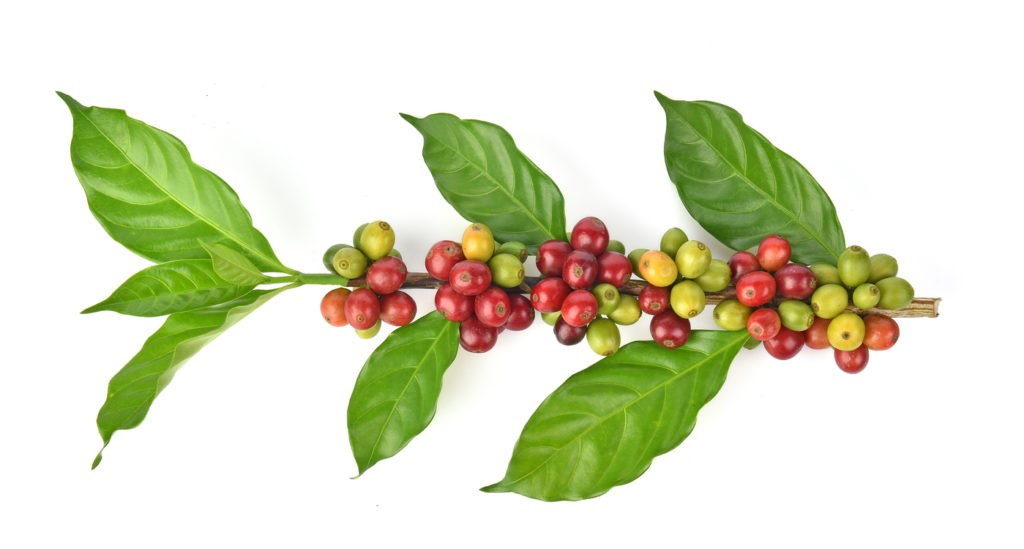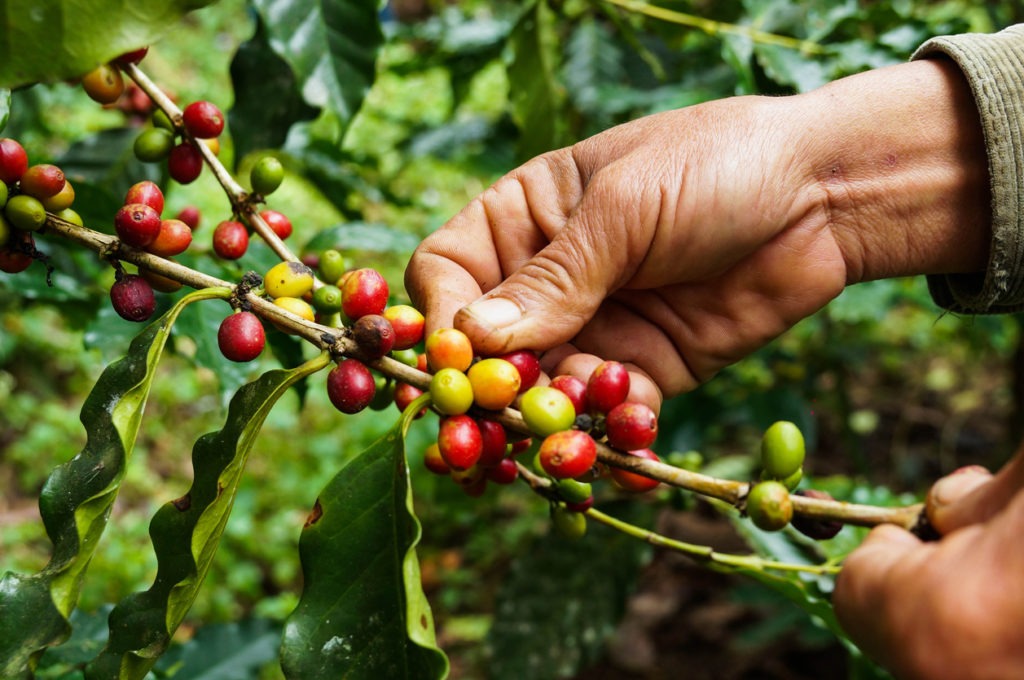You’re probably familiar with coffee beans, but have you ever heard of coffee berries? It’s where our beloved morning pick-me-up comes from. Derived from the same plant as the coffee bean, the coffee fruit is usually discarded using the coffee-making process.
However, it became popular recently in the world of health and wellness, and it’s touted as a trendy, new superfood featured in supplements, teas, and juices alike. Once considered a useless byproduct of coffee harvesting, coffee fruit can offer different health benefits.
In this article, learn more about coffee berries, how it benefits health, and some frequently asked questions about this fruit.
What is Coffee Berry?
Coffee berry, also known as coffee fruit or coffee cherry, is a small, rounded stone fruit produced by the coffee berry plant. As opposed to stone fruits, where we eat the outer flesh, the most commonly consumed part of the coffee berry is the bean, which is technically a coffee seed.
In its raw form, a coffee berry is green. It turns into deep red, purple, or yellow as it ripens. It has a sweet, floral aroma and taste, the same as other reddish fruits and berries. Raw coffee beans are usually extracted from fruit processing and roasting to make coffee.
Types of Coffee Plants
Coffee plants are grown in tropical regions and can carry several coffee berries with different ripeness levels. These are the two main types of coffee plants:
- Coffea Arabica (Arabica coffee) – This coffee originated in Ethiopia, with flat and long beans. Arabica is mild and aromatic and contains lower caffeine content than Robusta coffee. But despite containing less coffee than Robusta, Arabica beans are considered superior in taste because it has a smoother, sweeter taste. About 70% of the world’s coffee supply is Arabica coffee.
- Coffea canephora (Robusta coffee) – This coffee is grown in Southeast Asia, Africa, and Brazil. Robusta has round and small beans, which are stronger than Arabica, containing 50% to 60% more caffeine. Despite having a less refined flavor, Robusta is widely used in espresso blends because it’s better known to produce a creamy layer on top of an espresso shot. This coffee plant variety is also hardier, more resistant to disease, and produces better yields.
Nutritional Content of Coffee Berry
Studies have shown that coffee berries or coffee fruit has numerous health benefits. It’s even considered a superfood because it’s rich in the following nutrients:
- Caffeine
- Antioxidants
- Vitamin B2 (riboflavin)
- Magnesium
- Quinic acid
- Chlorogenic acid
- Diterpenes (cafestol and kahweol)
Benefits of Coffee Berry
Research has suggested that coffee berries can help improve the body in different aspects – thanks to their rich antioxidant content, cognitive-supporting abilities, and fat-fighting action. Here are some of the benefits of coffee berries that are the most common:
1. Rich in antioxidants
Coffee fruit contains beneficial antioxidants and polyphenols that can help neutralize free radicals, contributing to cell damage and causing chronic diseases over time. A massive benefit of consuming a diet high in antioxidants is a reduced risk of diabetes, cancer, heart disease, and other chronic diseases. If you already have one of these conditions, the antioxidants in coffee cherry may help slow down the progression of the disease.
Like coffee, coffee berry contains antioxidants, such as:
- Chlorogenic acid – a group of polyphenols that fight oxidative stress and inflammation by scavenging harmful free radicals.
- Cafestol – a diterpene compound that induces the expression of antioxidant proteins and detoxifying enzymes.
- Caffeic acid – a phenolic compound made by all plants, providing potent antioxidant, anti-cancer, and anti-inflammatory activities.
- Kahweol – a diterpene compound commonly found in the coffee bean- is more effective than cafestol in providing antioxidant activities and inhibiting different stages of carcinogenesis.
- Caffeine – Caffeine itself is also an antioxidant, as it can also diminish cellular oxidative stress and stop the production of free radicals.
Coffee berry is usually found in supplement forms, so there’s a chance that specific processing methods can reduce antioxidant levels. Generally, coffee berry extracts have higher antioxidant levels than coffee berry powders. Keep this in mind if you’re looking for coffee berries for their antioxidant benefits.
2. It may boost brain health
Research suggests that coffee fruit can help protect brain function, slow down signs of aging, and prevent age-related cognitive diseases like dementia and Alzheimer’s disease. It can do this primarily because of its antioxidant and caffeine content and its ability to boost brain-derived neurotrophic factor (BDNF) levels. BDNF protects the brain against Alzheimer’s and helps maintain and grow neurons. Alzheimer’s is associated with lower BDNF levels, so it’s possible that coffee berries can be used to prevent or manage this disease.
Because BDNF is involved in building new neural pathways, coffee berries may also assist with enhanced learning. Also the polyphenols in coffee berries can also help improve mood, energy, and cerebral blood flow. The chlorogenic acid can also travel to the brain and help protect it from stress. Taking coffee berries may also help boost mood and improve well-being, which can be helpful for people with depression.
3. Promotes weight loss
While there is limited research, some studies suggest that coffee berry extract may help promote fat loss. One reason for this is the high levels of chlorogenic acid that coffee berries contain, which is shown to help with weight loss, prevent weight gain, and boost fat burning, especially abdominal fat loss. Coffee berries can both inhibit new fat cell growth and release stored fat to be used as energy. When combined with caffeine, chlorogenic acid can stimulate lipolysis, which is the breakdown of fat for use as energy.
4. Improves heart health
The high levels of antioxidants and polyphenols present in coffee berries can help reduce inflammation within the body, thus reducing the risk of developing heart disease. The polyphenol in coffee berries can help reduce blood pressure, keep cholesterol levels in check, and reduce the risk of developing blood clots. Overall, coffee berries may have a protective effect on keeping the circulatory system healthy.
Also, the chlorogenic acid in the green coffee extract can help decrease blood pressure and reduce the risk of heart disease and stroke.
5. Keeps blood sugar levels healthy
Polyphenols are antioxidants found in plant foods, including coffee berries. Consumption of polyphenols reduces the risk of developing diabetes and helps manage the disease. It’s possible because polyphenols can help prevent blood sugar spikes after meals by preventing starch from breaking down to sugar, thus allowing it to aid in blood sugar balancing. Also, diets that are high in polyphenols can help lower fasting blood glucose levels and promote higher insulin sensitivity.
6. Has anti-cancer effects
Caffeine can prevent cancer formation and spread, especially endometrial and liver cancer. There were several animal studies (1, 2) conducted revealed that coffee berries have anti-cancer properties. However, more studies are still needed to confirm if coffee can help protect against developing cancer.
7. Has anti-aging effects
The powerful antioxidants in coffee fruit can also help your skin look youthful. Some skincare and cosmetic product manufacturers add coffee extract to their products.
Ways to Consume Coffee Berries
In their ripe form, coffee berries can be eaten and enjoyed on their own. But fresh coffee berries are not accessible in many parts of the world (and in some that do, they make use of it mostly for their coffee beans). Because of that, it’s mainly available for purchase at health stores and pharmacies in other forms, such as pills, extracts, and capsules. The coffee fruit extract is added to other supplements containing a mixture of other fruit extracts and natural products.
Coffee berries can also be found in drinks like fruit juices and coffee cherry tea, known as cascara tea – a type of herbal tea made from the dried skin of the coffee berry.
Another form of coffee berry that you can use is coffee flour. It doesn’t have a coffee flavor that will make your baked goods a bit bitter – surprisingly, it has a fruity, citrusy note and boosts the fiber, mineral, and antioxidant content of recipes. Coffee flour is made of dried coffee berries that are ground into powder. However, be sure to follow trustworthy recipes since coffee flour can’t be substituted or used with a 1:1 ratio to regular flour.
Also, some skincare products come with coffee berry extracts to reduce inflammation and improve skin texture. However, more research is needed to evaluate how it may affect skin health.
FAQs about Coffee Berries
1. Is coffee berry edible?
Yes, coffee berries are edible, but eating them doesn’t yield much. Each coffee berry contains only a little bit of flesh surrounding the coffee bean (the seed inside). Plus, this thin inner flesh has a thin covering and a slimy film that protects the bean that you have to work around. It’s not too appetizing and gives too little for a lot of effort, which is why it’s often consumed as a powder or extract, as seen in many supplements.
2. Does it taste good?
Coffee berries are most enjoyable to eat when it’s at their ripest stage. Some describe its taste as a cross between raspberry and watermelon, while others claim that it has floral flavors similar to hibiscus and jasmine. When unripe, coffee berries are sour and not too tasty. And no, the fruit doesn’t taste like roasted beans at all.
3. Does it have caffeine in it?
Like the coffee beans inside, coffee berries come with caffeine. The exact amount will vary based on the processing method, but most coffee fruit extract products come with 5 to 20 mg of caffeine per serving.
Conclusion
Coffee berry is the fruit of the coffee plant, which contains coffee beans. Once considered useless, coffee berries are recently found to contain antioxidants that may benefit brain function and fat loss, among others. Coffee berry extract is available in supplement form or liquid form. It can also be enjoyed as a tea, as cascara tea.


